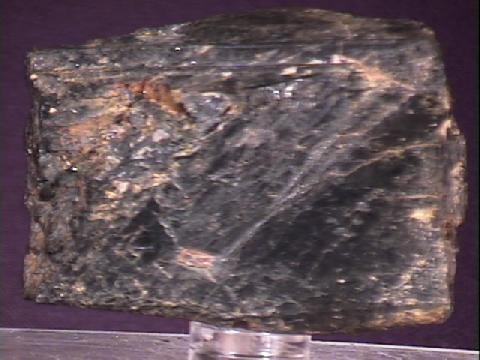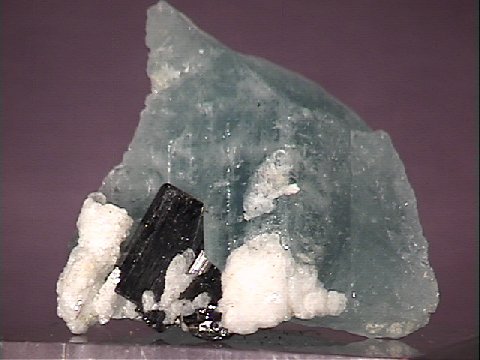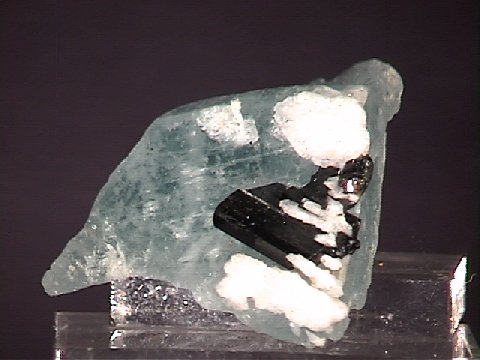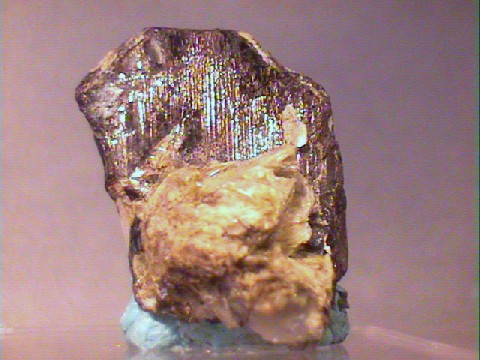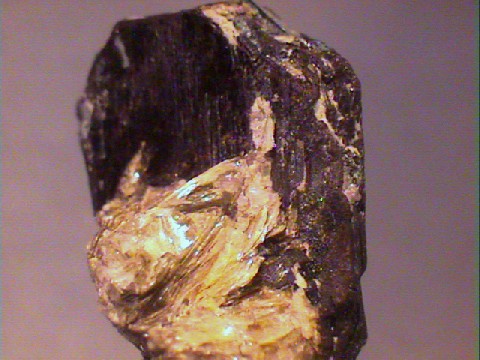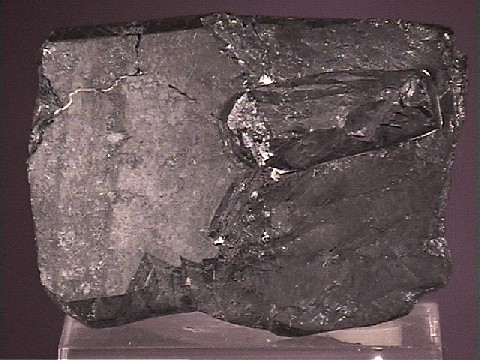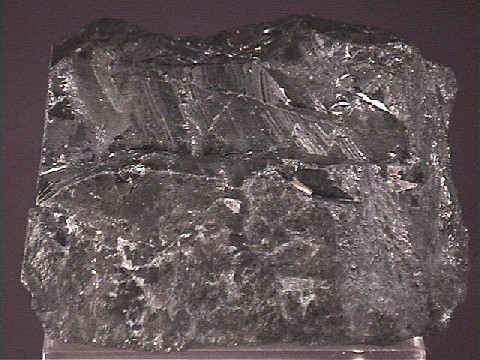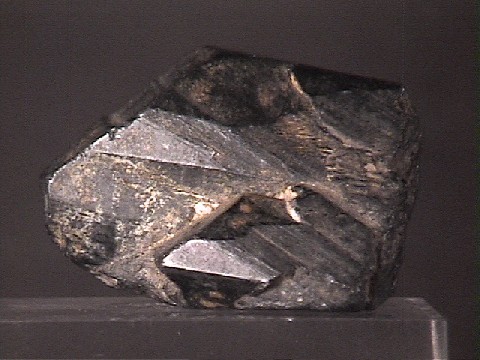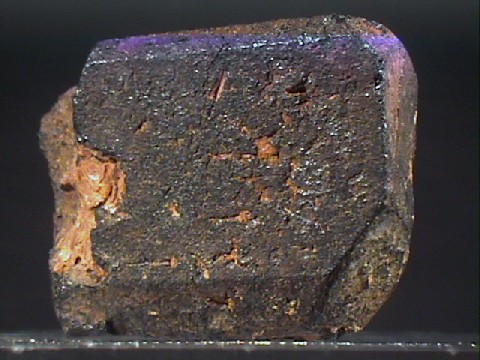 THE
MINERAL COLUMBITE
THE
MINERAL COLUMBITE
- Chemical Formula: (Fe, Mn, Mg)(Nb, Ta)2O6, Iron Manganese Magnesium Niobium Tantalum Oxide.
- Class: Oxides and Hydroxides
- Uses: An ore of niobium and tantalum and as mineral specimens.
Specimens
Columbite is the most widespread niobium mineral and makes for an important ore of the industrially useful metal. Niobium, Nb, is used in alloys for improved strength. It also has shown superconductive properties and is being studied with other metals for a possible breakthrough alloy in this new industrial field.
Niobium had previously been called columbium hence the name columbite. The official name was made niobium in the 1950's after a century of debate, although some groups still do not recognize the official name and still refer to it as columbite. Of course most geologists still refer to its name sake mineral as columbite instead of the proposed "niobite".
Columbite forms a series with the mineral tantalite. In fact the two are often grouped together as a semi-singular mineral called columbite-tantalite in many mineral guides. A series is where two or more elements can occupy the same places within a crystal structure and their respective percentages can then vary. Columbite is the more niobium rich end member and tantalite is the more tantalum rich end member. The two minerals of this series have similar properties since they have the same structure and similar chemistries (tantalum and niobium are very similar elements).
Tantalite's greatest difference from columbite is its much higher specific gravity, 8.0+ compared to columbite's 5.2. Other properties that vary slightly are color, transparency and streak. Both minerals can be found more or less together in granitic pegmatites rich in lithium and phosphorus minerals with columbite concentrated at the edges of the pegmatite and tantalite enriched in the core.
Columbite is a series within a series. The iron, manganese and magnesium amounts vary considerably without much effect on properties. However the end members are recognized as distinct minerals although collectors have found this to be rather cumbersome and generally prefer columbite to the non-unique names of ferrocolumbite, manganocolumbite and magnocolumbite.
As mineral specimens, columbite can be a nice addition to one's collection. Good crystals are both complex and handsome. Although the color selection is usually limited too black to brown the luster is generally good.
PHYSICAL CHARACTERISTICS:
- Color is dark black, iron-black to dark brown.
- Luster is submetallic.
- Transparency: Crystals are nearly opaque being transparent in thin splinters.
- Crystal System is orthorhombic; 2/m 2/m 2/m
- Crystal Habits include stubby prismatic crystals with complexly faceted or rounded terminations. Also very flat tabular crystals often aggregated together in parallel or nearly parallel groups. Can also be granular and massive.
- Cleavage is good in one direction.
- Fracture is subconchoidal.
- Hardness is 6
- Specific Gravity is approximately 5.0 to 5.3+ when near pure columbite (very heavy for non-metallic minerals).
- Streak is brown to black.
- Other Characteristics: Some specimens may demonstrate weak magnetism.
- Associated Minerals include albite, spodumene, cassiterite, microcline, lepidolite, apatite, beryl, microlite, tourmalines and amblygonite.
- Notable Occurrences include Newry, Maine; San Diego Co., California; Colorado and Amelia, Virginia, USA; Renfrow County, Ontario, Canada; Madagascar; Sweden; Norway; Brazil; Argentina; Kugi-Lyal, Pamir, Russia and Finland.
- Best Field Indicators are crystal habit, streak, associations and specific gravity.

